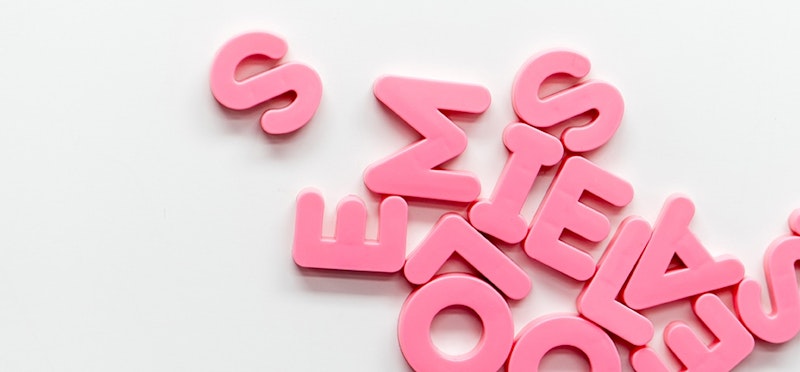The article Modifying the Spalding Phonogram Set specifies eight attributes that a teaching set of English phonograms should possess. Number five was: The order of the phonogram set should enable a child to begin reading before learning the entire phonogram set, if possible. This article discusses how to use the OnTrack Reading Phonogram Flash Card Set to do that using the Ayres List of most commonly-used English words.
It will also address teaching the phonograms, and how to incorporate writing and reading into the mix. And, although the Spalding phonogram set was criticized in the previous article, a copy Ms. Spalding's book, The Writing Road to Reading, hereafter WRTR, preferably the 4th edition, will prove useful to any parent using the OnTrack Reading Phonogram Set, for reasons that will soon become obvious.
Download the OnTrack Reading Phonogram Flashcards

Ideally, Teach Writing the Phonograms First
Page 67 of the 4th edition of WRTR begins a section titled "Detailed Techniques for Teaching the Lower-case Manuscript Letters." I encourage any parent or teacher working with a young child who is learning to form letters to follow her explicit advice.
Beginning there, she tells you to teach the printing of the following phonograms, in order, along with their associated sounds: a, c, d, f, g, o, s, and qu. You will find that these are the first 8 phonograms in the .OnTrack Reading Phonogram Set. The reason for teaching these together is that they are all curved letters that can be explained in terms of a clock face. I will leave it to the reader to decide whether or not to follow Ms. Spalding's lead here.
However, I do highly recommend that you teach your child to form the phonogram d by making a counterclockwise circle, then continuing up to make the line, then back down to the baseline, and then teach him to form the phonogram b by beginning at the top of the line, and then making a clockwise circle after the line reaches the baseline. Printing the letters in this manner will come in very handy should you ever need to clear up later confusion between b and d. (See Telling b from d for more information.)
Now, for the purpose of using the phonogram flash cards, I'm going to assume that your child already knows how to print all the letters. If he doesn't, you could follow the procedures described in WRTR.
Teach the Sounds Associated with Each Phonogram
On the back of each phonogram flash card is a list of the sounds to be taught as represented by that phonogram. Thus, on the back of the first card, phonogram a, are the three sounds /a/, /ae/, and /o/. This is exactly the information your child should learn to associate with that phonogram. (Except as noted later for a few words, do not teach the key words; they are there to make clear the sound you should say.)
Thus, upon being shown the phonogram a, your child should learn to respond with "/a/, /ae/, /o/." Do not call it the "letter a." Just call it /a/, /ae/, /o/, and leave it at that.
Later, have your child write the phonograms as you say their sounds, along with the added information at the back of the card. There is none on Card #1, so you would just say "Write the phonogram for /a/ae/o/." But on the back of Card #36 (ow) you will see "Call this the Ending /ow/" so tell your child to "Write the phonogram for the ending /ow/."
The only cards that use the key word as a spelling cue are some of those with /er/ sounds and some with /sh/ sounds. With these you give him the key word and say, for example, "Write the phonogram for the /er/ sound in turn." Another example: "Write the phonogram for the /sh/ sound in motion."
Obviously, the spelling part comes after the teaching and reading parts. First a child is taught the sounds of the phonograms, then says the sounds when shown the cards, then writes the phonograms when prompted with the sound and any additional information to identify it.
The Various Cues on the Back of the Cards
On the back of several of the cards, is a note stating something like: "Call this the ending /ae/" (on the back of the phonogram ay.) Several of the phonograms, fourteen, to be exact, bear this note. They are phonograms like ay, ey, ce, me, ne, and le that mainly occur at the end of words.
Another note you will find on the back of four of the flash cards reads something like "Call this the split vowel /oe/." These are the phonograms that can also be "split" in words like home and time and cute.
Similar notes allow you to differentiate one phonogram from another later on. For example, if your child asks how to spell the number "eight" you'll be able to reply "Use the four-letter /ay/."
You'll note that there are also four cards that state something like "Call this the Marker /ch/." This is information used in the OnTrack Reading Multisyllable Method, which I highly encourage you to investigate and use. It will work wonders in building confidence in decoding longer, multisyllable words.
Move On to Teaching Words
After the first 50 phonograms have been learned, the spellings of about 80 of the most common English words can be taught without running into a phonogram that hasn't been taught yet. The Ayres List is one source of common English words. Here is a free copy of the Ayres list thoughtfully provided at americanenglishdoctor.com. When I last checked, the words listed as being in sections A-G can all be spelled after the first 50 phonograms in the OnTrack Reading Phonogram Set have been taught.
And once the first 80 or so words have been learned (by spelling them accurately, and reviewing them), your child should be able to pick up a very simple children's book and begin reading it, especially if it's one of the books Ms. Spalding recommends at that point. (I really, really, do encourage anyone with a child approaching reading age to acquire a copy of the 4th edition of WRTR.)
A Simplified Coding System to Mark Each New Word
Here are the simple coding rules that you should use to mark up words when your child spells them for the first time. Do not use this in any other way, like trying to write coded stories, etc. Just keep a coded list of the words as he goes through them the first time so he can refer back to it later.
- Place a single-underline under all digraphs. (That is the only use of the single-underline.)
- Place a number over any phonogram that represents a sound other than it's first sound. That number should correspond with the order of sounds on the phonogram cards. For example, phonogram a represents the /a/ae/o/ sounds, so the word want is coded by placing the number 3 over the a. (This is the only use of numbers in the coding system.)
- Place a double-underline under any extraneous letters, or under any phonogram that represents an unusual sound. If the letter is extraneous, i.e., not being used to represent a sound at all, just double-underline it and leave it at that. The presence of the double-underline in a word like two (with the double-underline under the letter w) is a reminder to your child that he has to remember the w for spelling purposes, but that it's not used when decoding. And if the phonogram represents an unusual sound, like the u in busy, you can write i under the double underline to show that in that word the u is the /i/ sound, a very unusual occurrence.
Teach a "Perfect Pronunciation"
Many words, like a, the, done, some, many, any, etc., are usually pronounced with either schwas (u, the, dun, sum) or slightly different vowel sounds (meny, any), but they can easily be forced into what is called a perfect pronunciation. The word a, for example, can be taught as its second sound, /ae/, quite easily. Just explain to your child that it's really /ae/, but we tend to say /u/. Similarly the word the can be taught to rhyme with thee, and marked with a 2 over the e, designating its second sound, again, while explaining that in normal speech we usually say thu.
Words like many and any should just be pronounced as they appear, using the first sound for the phonogram a. Yes, we say meny, but for spelling accuracy we should be thinking many, assigning an /a/ sound to the letter a. Similarly, words like come, some, done, son, ton and month should be taught as bearing the first sound of the phonogram o, rather than the /u/ we actually hear. Your child should think /s/o/n/ when spelling "son," but should think /s/u/n/ when spelling "sun."
Another class of words that need consideration are those that begin with a schwa sound. These are words like around, ago, along, away, and avoid. The first letter in each should be coded as the /o/ sound, that is, as the third sound of the phonogram a. Granted, we don't say ah-round, ah-go, ah-long, etc., but that's primarily due to the "a" standing alone as an unaccented syllable. If you teach it as the third sound of the phonogram a, you'll meet no resistance from a young child. In fact, after you do it enough, you'll find yourself thinking of it as an /o/ sound too, just an unaccented one.
Summing Up
If your child is old enough he should learn to write the phonograms properly at the same time he is learning the sounds associated with them. Thus, you should be teaching him that the phonogram a is the /a/ae/o/ phonogram at the same time he is learning to print it. WRTR will come in handy if you're still at the letter forming stage.
If he's already writing letters properly, use the phonogram cards as flash cards, getting him to learn the first ten or so. Then have him write them all. For example ask him to "Write the phonogram for /k/s/" and see if he writes the phonogram c.
Once your child knows the first 50 phonograms he can learn the first 80 or so words on the Ayres List without running into a phonogram he doesn't know yet. As he's learning those words, you can also be teaching him the remaining phonograms. And when you finish teaching all 84 phonograms, if you also decide to teach the OnTrack Reading Multisyllable Method, your child will eventually be prepared to decode most of the unfamiliar words he will ever encounter.


